How to grow a begonia in a hanging basket
Begonias are magnificent, vigorous, and highly decorative plants, with their abundant flowering lasting several months. While there are all sorts of begonias, certain trailing varieties create a stunning cascade of flowers and leaves. Low-maintenance and undemanding, they are ideal for hanging flower pots. Discover our step-by-step tutorial to create a beautiful and voluminous hanging basket or balcony planter with begonias.
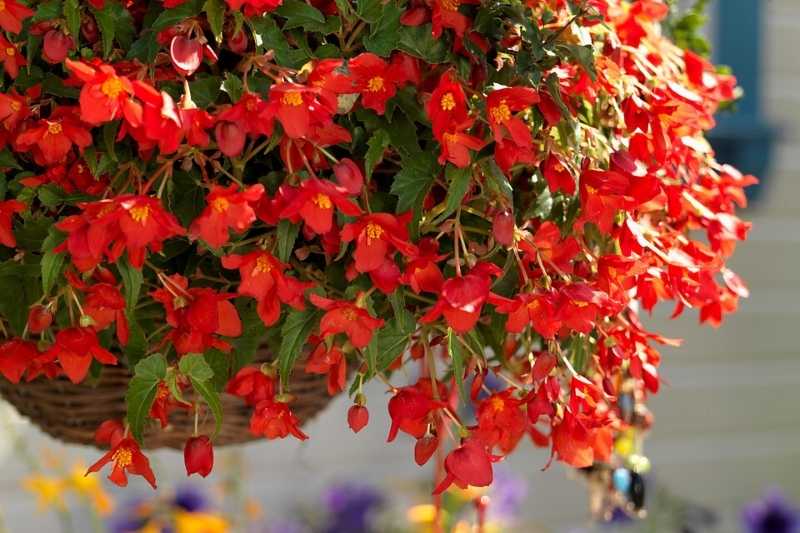
Before you begin: When to create this begonia hanging basket?
Begonias cannot tolerate frost. The bulbs are typically planted in May, once the risk of frost has passed. Alternatively, you can plant them under cover, such as in a greenhouse, as early as February.
1- Choosing the right hanging basket:
Ideally, choose a hanging basket around 40 cm in diameter. Begonias dislike excess water, so opt for a basket with drainage holes at the bottom or, even better, one with an integrated saucer. If there is no drainage, you can drill a hole or use a pointed tool (like a screwdriver) and hammer it in.
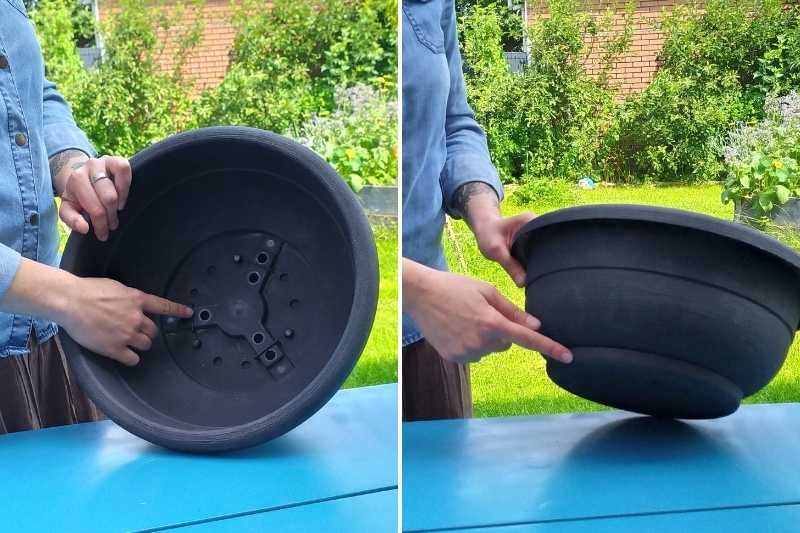
A hanging basket with drainage holes and an integrated saucer.
2- Drainage:
Place a layer of clay pebbles at the bottom to facilitate drainage and water flow. The pebbles will prevent water stagnation and limit mould formation at the root level.
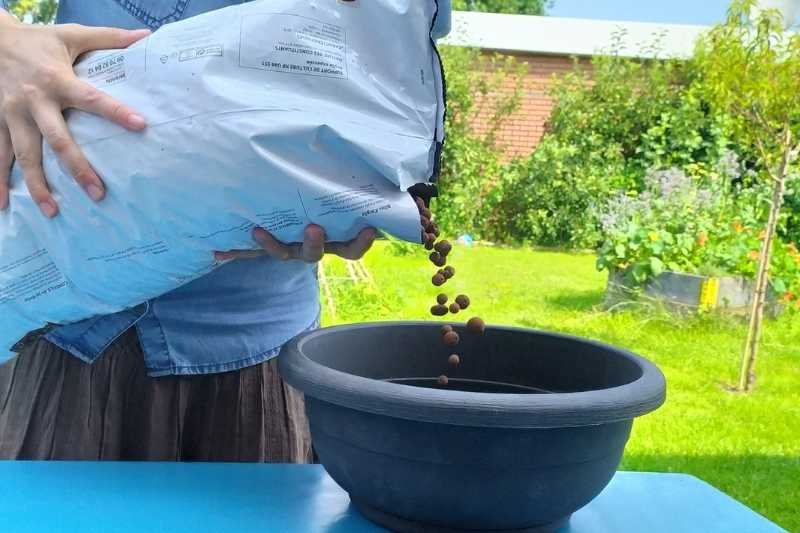
A layer of clay pebbles aids drainage.
3- Adding compost:
- Use a hanging basket compost or one for "geraniums and flowering plants," which will perfectly suit the needs of begonias. The plant will then have the essential nutrients for healthy growth. Avoid using so-called "universal" compost, which will be too poor for your plants.
- Fill the basket with compost up to halfway.
- Using a spray bottle, water the compost generously, preferably with rainwater, which is less calcareous than tap water.
4- Adding your begonia bulbs:
Select healthy begonia bulbs free from mould. Position the pointed end upwards. For a 40 cm diameter hanging basket, space 4 to 5 begonia bulbs evenly.
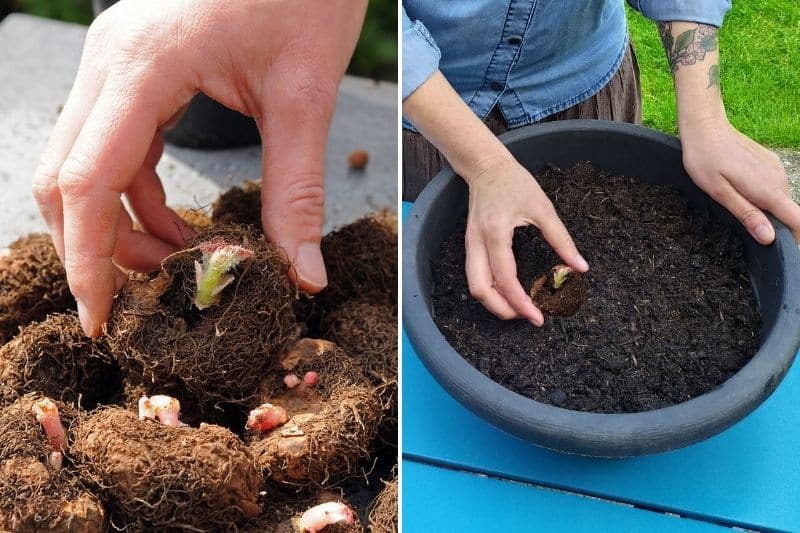
5- Covering and watering:
- Cover your begonias with compost, then firm it down to ensure good contact between the bulbs and the substrate.
- Using a watering can or spray bottle, water your hanging basket thoroughly with a fine spray until water drains out of the holes.
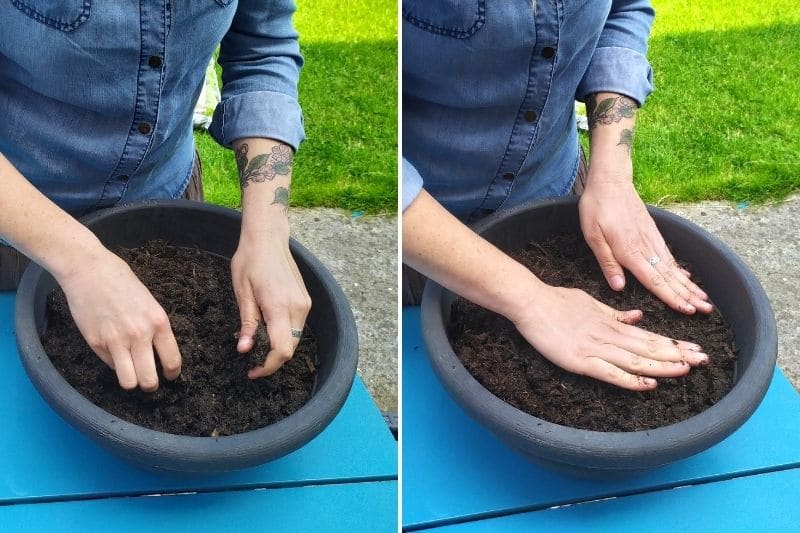
6- Maintenance and overwintering:
- Water your hanging basket regularly when the soil dries out, but avoid overwatering. Begonias dislike excess moisture, so the compost should remain moist but not waterlogged. Monitor and increase watering during hot spells. Note: Compost in hanging baskets dries out faster than garden soil.
- Begonias can be prone to powdery mildew. To prevent this, water directly at the base of the plant, avoiding wet foliage.
- Place your hanging basket in full sun or partial shade, but avoid scorching midday sun, especially in hot regions.
- Begonias are highly sensitive to cold. However, they can live for several years if kept in good conditions. During winter, you can move your hanging basket indoors to a greenhouse, conservatory, or even your home. The room should be bright and well-ventilated. Reduce watering during this period.
- In spring, repot your begonias to refresh the compost.
- To encourage long and beautiful flowering, apply fertiliser regularly, either a liquid fertiliser or a slow-release fertiliser like Osmocote® Exact 6-month cones.
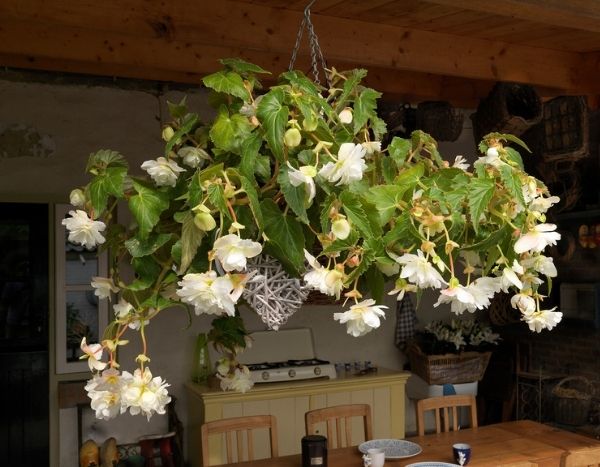
A beautiful begonia hanging basket indoors during winter.
To go further:
- Explore all our begonia varieties as bulbs, plug plants, and seeds.
- Discover our complete guide on bedding begonias: planting, growing, and care.
- Also read our advice sheet on plug plants: How to plant hanging baskets and containers with annual plug plants?































![[suspension_begonia_tutorial title="How to Create a Stunning Begonia Hanging Basket" difficulty="Intermediate" duration="1 hour" materials="Hanging basket, potting soil, Begonia plants, slow-release fertiliser, watering can" featured_image="URL_of_featured_image"]
In this tutorial, we will guide you through the steps to create a beautiful hanging basket with Begonia plants. Begonias are known for their vibrant colours and lush foliage, making them a perfect choice for hanging baskets.
Step 1: Choose a suitable hanging basket
Select a hanging basket of your choice, ensuring it has good drainage holes at the bottom.
Step 2: Prepare the potting mix
Fill the hanging basket with a high-quality potting mix, leaving enough space for the Begonia plants.
Step 3: Plant the Begonias
Carefully plant the Begonia plants in the basket, spacing them evenly to allow room for growth.
Step 4: Add slow-release fertiliser
Incorporate a slow-release fertiliser into the potting mix to provide nutrients to the Begonias over time.
Step 5: Watering
Water the Begonias thoroughly after planting, ensuring the soil is evenly moist but not waterlogged.
Step 6: Placement
Hang the basket in a location that receives bright, indirect sunlight for optimal growth.
Step 7: Maintenance
Regularly water and fertilise the Begonias as needed, and deadhead faded flowers to encourage continuous blooming.
Enjoy your stunning Begonia hanging basket and watch as it adds a touch of beauty to your garden or outdoor space! [/suspension_begonia_tutorial]](https://en.promessedefleurs.eu/blogwp/wp-content/uploads/2021/07/Suspension-begonia-tutoriel.jpg)
Comments